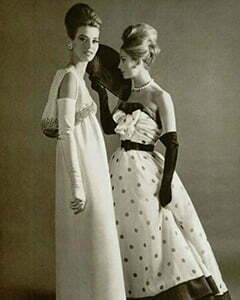 While the swinging 60s are best remembered for miniskirts, go-go boots, and crazy hippie hairstyles, women still loved glitzy and glamorous evening wear. Any woman conscious of her place in the society had an assortment of the evening including several ball gowns. The evening wear designs from the late 50s had largely carried over into the early 60s. Knee-length (tea-length) puffy swing skirts were popular with women of all ages. Lace evening dresses and ball gowns were popular in neutral or pastel colors. A bow at the front waistline could be seen on many gowns and evening dresses.
While the swinging 60s are best remembered for miniskirts, go-go boots, and crazy hippie hairstyles, women still loved glitzy and glamorous evening wear. Any woman conscious of her place in the society had an assortment of the evening including several ball gowns. The evening wear designs from the late 50s had largely carried over into the early 60s. Knee-length (tea-length) puffy swing skirts were popular with women of all ages. Lace evening dresses and ball gowns were popular in neutral or pastel colors. A bow at the front waistline could be seen on many gowns and evening dresses.
Ball gown vs cocktail
 There were a few characteristics of the 60s evening gown to mark it apart from a cocktail dress. Ball gowns were longer. Most were floor-sweeping garments but ballerina (above the knee to mid-calf) or tea length (slightly above the ankles) lengths could also be had. Evening gowns were also made from more expensive fabrics such as satin, silk, organdy, and chiffon. Cocktail dresses were in a variety of silhouettes like the A-line, sheath, mermaid, and trumpet style. But ball gowns had a full skirt with a fitting bodice. Ball gown dresses were almost exclusively worn to formal events.
There were a few characteristics of the 60s evening gown to mark it apart from a cocktail dress. Ball gowns were longer. Most were floor-sweeping garments but ballerina (above the knee to mid-calf) or tea length (slightly above the ankles) lengths could also be had. Evening gowns were also made from more expensive fabrics such as satin, silk, organdy, and chiffon. Cocktail dresses were in a variety of silhouettes like the A-line, sheath, mermaid, and trumpet style. But ball gowns had a full skirt with a fitting bodice. Ball gown dresses were almost exclusively worn to formal events.
The new-look from the 40s had carried over into the 50s and extended to the 60s in different restyling. The basic silhouette was the rounded feminine shoulders, a narrow waist, and a full skirt or sheath style skirt. The ball gown featured the full skirt while cocktail dresses had slim skirts. Both usually featured strapless bodices.
The varied experimentation in the swinging 60s extended to evening wear by the mid-60s. The short mini dress in straight style was restyled and embellished with bright patterns, metallic colors and sequin trim to make it stylish evening wear. However, skirt lengths largely remained lengthy.
The straight style of the sheath dress was popularly worn with a matching short jacket in nude, bronze, or black. It was also available in jewel tones, pinks, and pastels for semi-formal occasions. The longer skirted sheath styled evening gown was appropriate evening wear for formal events. This style has a tapered bubble skirt that dropped into a high empire waist. Contrasting colors for the bodice and skirt made the gown more stylish and noticeable. Younger women preferred brighter colors such as seafoam green and bubble gum pink.
Designer gowns
 The move to straighter columnar skirts gradually happened in the early 60s with designers such as Givenchy Hardy Amies preferring the slimmer look. Hardy Amies is notable for being Queen Elizabeth II’s outfitter. The eau de nil silk collection by Hardy Amies showed the world how this columnar look was fitting for different profiles. The tight bodice and the narrow waist were retained for the romantic and feminine form. The eau de nil collection had a shallow neckline and a deep V cut in the back. The bodice was embellished with clear glass beads and flower-shaped plastic sequins. The bust had silk panels at the side and a bow at the front. The skirt was long, soft, and gathered, made from organdy with white rayon underskirts.
The move to straighter columnar skirts gradually happened in the early 60s with designers such as Givenchy Hardy Amies preferring the slimmer look. Hardy Amies is notable for being Queen Elizabeth II’s outfitter. The eau de nil silk collection by Hardy Amies showed the world how this columnar look was fitting for different profiles. The tight bodice and the narrow waist were retained for the romantic and feminine form. The eau de nil collection had a shallow neckline and a deep V cut in the back. The bodice was embellished with clear glass beads and flower-shaped plastic sequins. The bust had silk panels at the side and a bow at the front. The skirt was long, soft, and gathered, made from organdy with white rayon underskirts.
The narrow-waisted look was still trendy in the 60s. Many women wore shaping undergarments like the corset and hip padding. The evening gown was usually worn with a flexible corset made from lace and nylon trim. The corset was boned but also had an elasticated panel at the back for better movement. The fabric was in neutral colors such that it blended well with the bodice’s color.
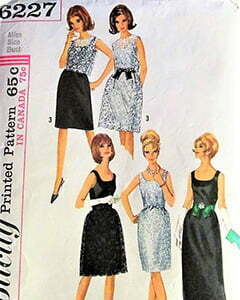 The evening gown was usually worn with pointed toes with the uppers cut out. Silver polyester brocade edged with silver leather was popular. Many women preferred to wear the gown with modest heels for better mobility. Younger women wore the fashionable ‘Winklepickers’ with the gown. These shoes had more pointed toes.
The evening gown was usually worn with pointed toes with the uppers cut out. Silver polyester brocade edged with silver leather was popular. Many women preferred to wear the gown with modest heels for better mobility. Younger women wore the fashionable ‘Winklepickers’ with the gown. These shoes had more pointed toes.
The end of the 60s saw the ball gown restyled from the floor-sweeping Victorian design to a simpler ankle-length or tea-length design. Some designs had the slim conical shape dropping to narrow hemline with a simple slit to make movement easier. At the end of the 60s, the differences between ball gowns, cocktail dresses, and other evening dresses were not clearly marked. Fashion designers were focused on practical, elegant, and classy designs that made the best of everything.


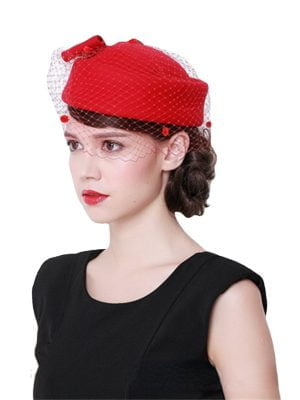





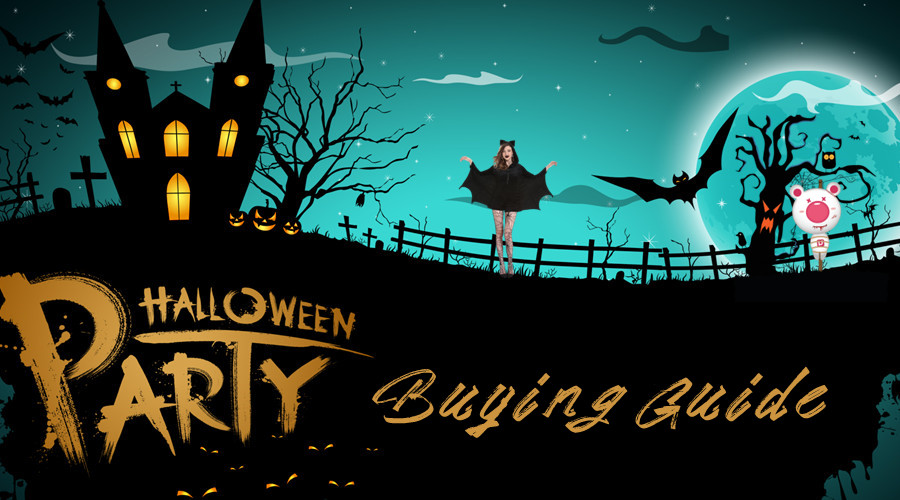



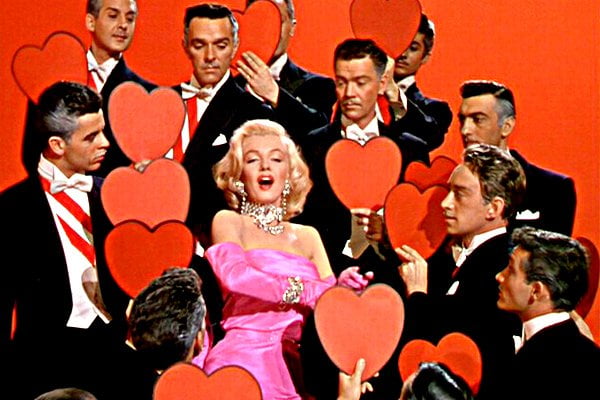
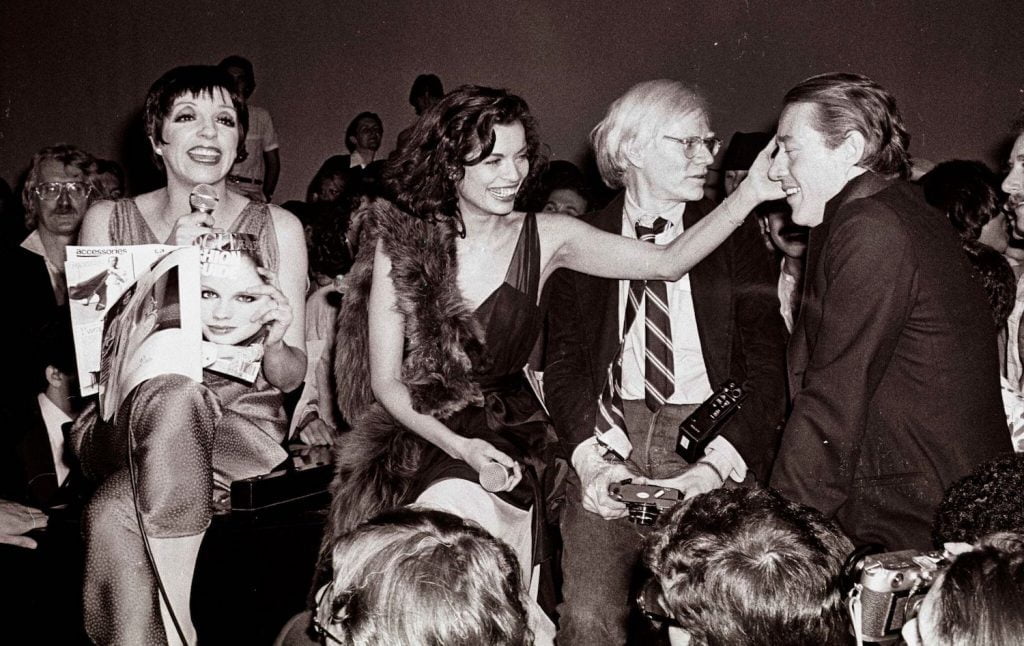

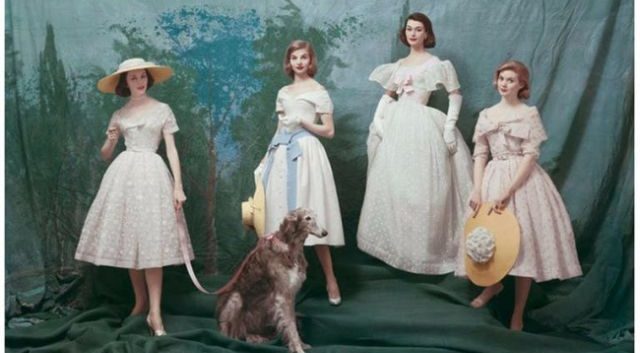
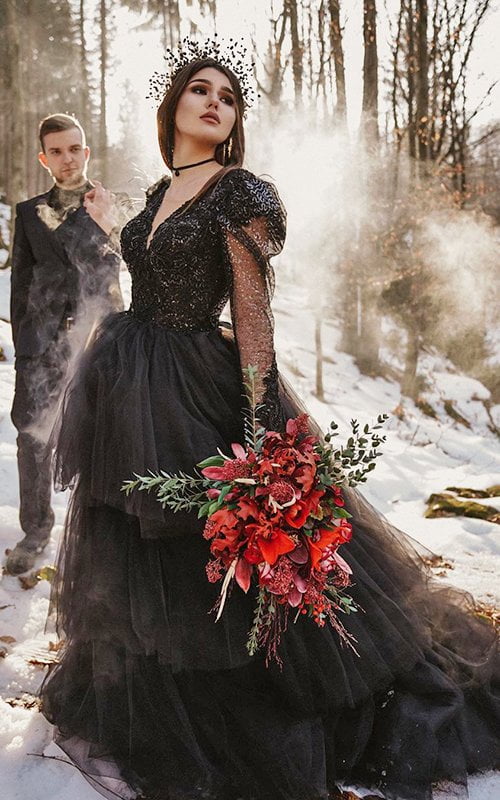

Like!! Really appreciate you sharing this blog post.Really thank you! Keep writing.
Thanks:)